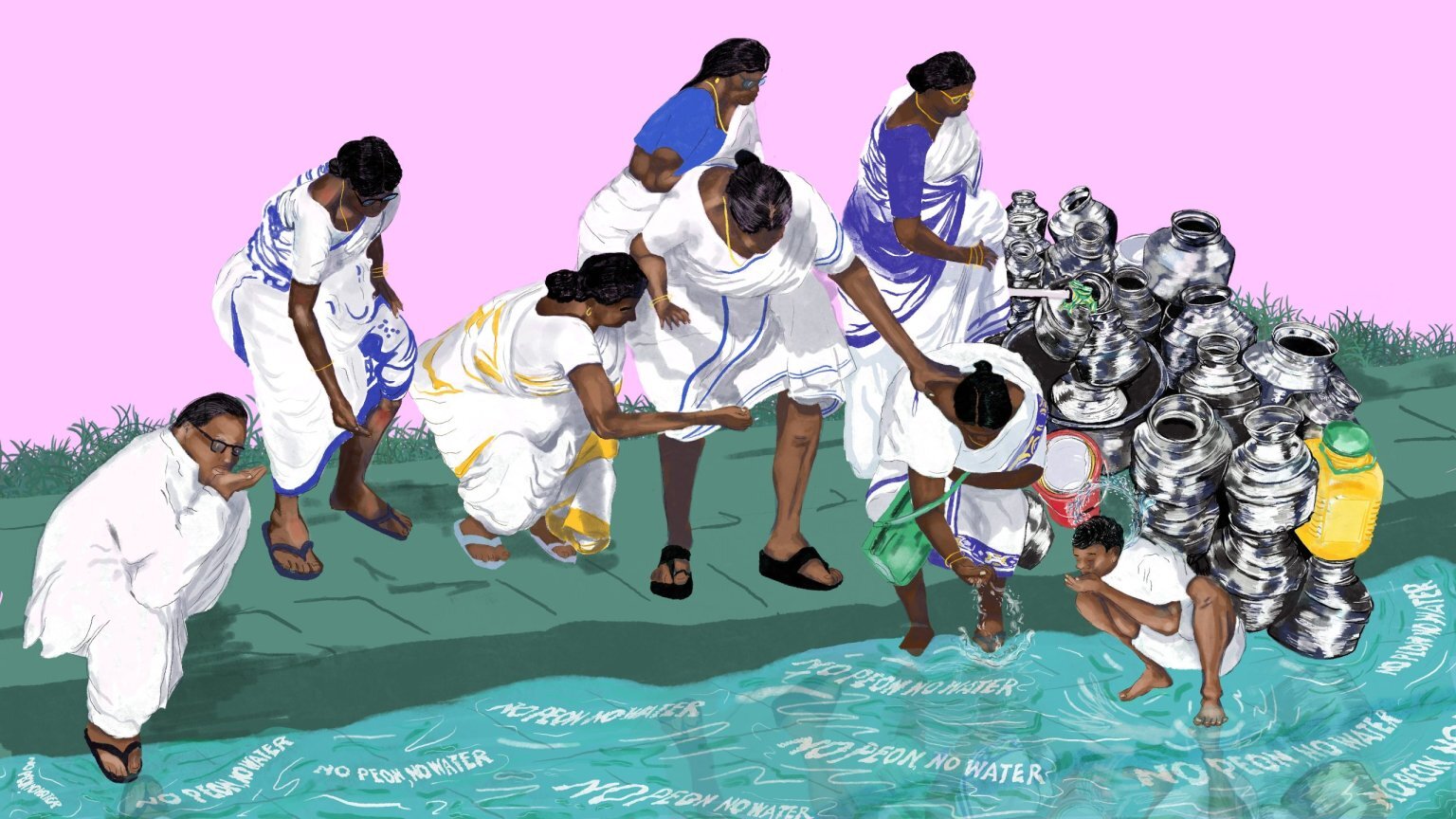The Supreme Court (SCOTUS) effectively struck down affirmative action last Thursday, June 29, therefore barring universities from considering an applicant’s racial background during college admissions. The decision didn’t come as a surprise to many across the nation, which had long foreseen the conservative-skewed court’s bias against policies meant to afford those of underrepresented and marginalized racial backgrounds equal opportunities and education.
Online through social media posts and in real life via in-person protests, countless artists, activists, students, scholars, and others expressed that their commitments to racial equity will not be thwarted in light of this disappointing news. But many noted that this will be an uphill battle. Last week, SCOTUS also ruled that the United States government has no obligation to assist the Navajo Nation with access to potable water; blocked President Biden’s campaign promise to forgive between $10,000–$20,000 of student loan debt; and determined that businesses may refuse “expressive services” to same-sex couples or LGBTQ+ identifying individuals based on a hypothetical situation, subsequently impacting the lives of millions of American residents for the worse.
Artist Dread Scott is using his platform to address the Court’s most recent and polarizing decisions through social media posts written in accessible, no-nonsense language. Getting to the root of these rulings, which prior decisions informed them, and how the decisions will impact others, Scott summarizes how our rights and liberties have been overturned in a single sentence.
“Today, June 29, 2023, the Supreme Court reaffirmed that racism can be used in college admissions and encouraged universities to return to being segregated as they had been for most of history,” Scott wrote in a post about the end of affirmative action.
“Today, June 30, the US Supreme Court affirmed that discrimination is OK, as long as your bigotry is based on a firmly based religious belief,” he wrote in another post about the court’s decision to side with an anti-LGBTQ+ website designer.
Some artists are revisiting older work that has become newly relevant as the reality of the Court’s decisions sets in. Incited by this conservative downturn stripping away Americans’ rights and liberties, Puerto Rican artist Pedro Vélez shared a mixed-media collaboration with Walter Fernández called “The Judge” (2019) on his Instagram. The collaged ink drawing of a cherub swigging from a glass bottle superimposed on a drawing of Supreme Court Justice Brett Kavanaugh during his 2018 testimony to the Senate Judiciary Committee is part of Vélez’s Political Whiskey series (2016–2019), begun during the 2016 election cycle.
“I think it was a way for me to deal with the anxiousness and fear of a possible Trump presidency and the hate one could sense brewing among conservatives,” Vélez told Hyperallergic. “First came the illegitimate seating of Neil Gorsuch followed by the sad spectacle of Kavanaugh. The piece is a serious caricature of a dangerous character. The SCOTUS ruling I feel will suck the life out of young people in the US of America. I’m saddened for them and the ultra-racist and unequal country they’ll have to negotiate.”
“But the SCOTUS decisions will also have serious consequences to our way of life down here in the island since those cruel and violent political strategies used in the USA have emboldened the radical religious movements in the island,” Vélez added.

College students across the nation have mobilized to express their disdain for the SCOTUS ruling. Last Saturday in Cambridge, Massachusetts, dozens of Harvard University students protested the Court’s decision on campus, arguing that the university and the workforce would see less diversity in the coming years. The school’s admission practices, alongside those of the University of North Carolina, were the subject of the Students for Fair Admission lawsuit that was brought to the Supreme Court. East and South Asian students, whom the lawsuit claims affirmative action discriminated against along with White applicants, refused to be characterized as champions of this decision. During the protest, they stood with other students of color who were admitted to Harvard with the help of affirmative action. Harvard University leadership issued a statement indicating that the school would “preserve, consistent with the Court’s new precedent, our essential values,” adding that SCOTUS’s June 29 decision didn’t explicitly bar universities from considering how race has impacted the lives of applicants.
The SCOTUS decision will have resounding impacts on higher arts education and careers — areas that have long been regarded as luxuries for the rich and White. After the ruling was announced, several art schools such as Pratt Institute and the Rhode Island School of Art and Design (RISD) alongside universities with competitive arts programs issued statements expressing disappointment regarding the decision, noting that they must comply with the law but will continue to uphold their commitments to diversity, equity, inclusion, and accessibility as they review their current policies and practices.
Some museum leaders also spoke up in response to the rulings. In Memphis, Tennessee, President Russell Wigginton of the National Civil Rights Museum said that the affirmative action decision is a “poignant reminder that the critical work to correct the generational impacts of our country’s long history of systemic racism is not finished.” Over in Los Angeles, Japanese American National Museum President and CEO Ann Burroughs highlighted that in the affirmative action ruling, SCOTUS referenced the 1943 Hirabayashi v. United States case that found the implementation of curfews and other restrictions on Japanese and Japanese Americans to be constitutional after the bombing of Pearl Harbor. “The World War II incarceration of Japanese Americans was rooted in the same discrimination and prejudice that drives anti-affirmative action,” Burroughs stated on behalf of the museum.

New York-based artist Christina Barrera, who describes herself as an “ardent supporter of student debt cancellation,” was born in South Florida to Colombian immigrant parents and attended the Maryland Institute College of Art for her BFA with a full scholarship. Freedom from debt, she told Hyperallergic, was one of the reasons she was able to pursue an art education.
“While my acceptance and scholarship aren’t explicitly affirmative action, they stem from the same logic — the stated aims of the scholarship were to increase the number of art students from underrepresented demographics who faced more obstacles in getting to art school and staying in the art world with the hopes of producing a more diverse art world,” Barrera said. “The creation of the scholarship acknowledged something that this ruling from the Supreme Court denies (at least publicly) — that we don’t all come into life with the same resources and we’re not all on a level playing field.”



